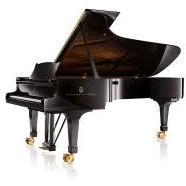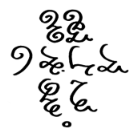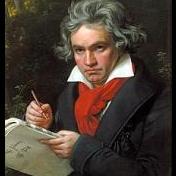Leaderboard
Popular Content
Showing content with the highest reputation on 02/01/2020 in all areas
-
I think the best word to describe my music is "neo-romantic." I write music that I feel is easy and pleasing to listen to - not necessarily 'light music' but not avant-garde. My style is not so similar to Romantic composers as to be reminiscent of any one, rather in a review I received here I was told that: "One minute I'm hearing Mendelssohn's influence, the next a little Tchaikovsky." I believe it was @J. Lee Graham who said that, a composer who is obviously also a traditional tonalist. My biggest works are largely Romantic. There are some minor 20th century inflections that I add, such as an unusual modulation or chord choice. I also like to utilise new instruments such as the Contraforte, or ones which slipped into obscurity during the Romantic period such as the alto trombone. NB: The alto trombone is a wonderful addition to the orchestral brass section. Listen to many orchestral pieces from the Classical era, including Beethoven's symphonies to hear it in action. In chamber works however, there is a larger scope of influence, especially from the music of Scotland, where I live. Classical pieces that I have written include sections with common Scottish musical ideas, and a string sextet that I am writing has the finale as a harmonised Strathspey dance. In the age of the internet and globalisation, we have a huge range of musical influences from throughout the world. Ethnomusicology is a growing area of study, and we composers have the freedom to write whatever we want, whether from orchestras with oboes and strings, or for ensembles with sitar, gamelan and electronics. What we should never forget is the universal language of music. Atonality has become common and respected, and this poses the risk of us tonalists being forgotten or actively disregarded. The worst thing that I could hear is not an experimentalist piece by Stockhausen. It's not a calculated serialist sonata. It's just four words: "Find your own voice." Who has the right to dictate anyone's compositional style?2 points
-
Saw an interesting comment in a post in the upload where someone was trying to describe their music in terms of whether they were 'neo-baroque' or not. So, figured it'd be an interesting discussion to be had -but... I don't want to just see a one word explanation of your music. So, I'll describe how I view my work -my language, my view, nada nada nada- and then you can follow suit. In other words, let's make this a valuable discussion. I consider my music to be chiefly modern. By that, I use a harmonic language rich in dissonance and outside of the traditional concepts of tonality (notice I didn't say my music was purely atonal). I do consider harmony and tonality to some degree -even in my more serial guided works. I also consider myself a neo-classicist. I strongly value form and tradition and believe staunchly in utilizing structure to make the most out of limited material (hence you'll see a lot of development and counterpoint within my works). I also, at times, borrow from other aesthetics and fuse different -often far separated- techniques together. It's not a fetch to see a whole tone derived section within a work of mine that is heavily centered on a serial row. Thus, you could say I'm a neo-classical modern eclectic.1 point
-
So... Somewhat astonishingly to me I've finished the other fugue I was working on today as well as the other one. If I had to tell which one is better, I would say this one is more varied in rhythmic terms, but that the one in F-sharp is overall more intense. Just one thing; I decided to use a subject by Bach, more specifically, that of the Fugue 5 of WTC 1, which is repeated three times throughout the fugue in each of the three different voices. I think it's fine, but anyone else may have their own opinion. Anyway, without further ado, here it is: EDIT: the subject by Bach appearing here is from Prelude 5 of Das Wohltemperierte Klavier, not the fugue. I was mistaken momentaneosly, sorry for the confusion.1 point
-
I write mostly schlock; sometimes garbage. I'm not well-trained enough to give this any serious thought, and I don't think it would matter if I did. I would say, though, that the Late Romantic and Impressionist composers have the most influence on me, and that's the kind of music I try to emulate. It's not current, but that's what I like, so it's all good!1 point
-
Sounds great! I like the counterpoint, although I couldn't tell you if it is technically good or not! I like the rhythmic variation throughout. It really holds interest for both the audience and the performer. Good job!1 point
-
1 point
-
Ok, I'll put in my tuppenceworth because yes, it's sometimes enlightening to learn how composers view their own music. I hope others add to it. The nearest popular label is Impressionist, when not being a hack. Not “programme music” though. I suppose by definition it’s atonal because I don’t write with key in mind though it can pass through tonal moments. I don’t use barlines in the initial stages of composing. Sometimes use coloured pastels on grey or black paper. It’s all sound organisation - sometimes with a utility purpose, sometimes for an audience whether live or public exposure as a recording. I’m not happy writing in keys unless it’s light music. Anything that makes a sound is a potential source. I rarely write for full orchestra now except to keep in practice and with the hope that the County orchestra might one day perform it. Otherwise I like ensemble writing, anything from string quartet to about 15 players. I’ve tried applying formal structures and usually fail. Tending to through-compose and working in motifs, it’s more about proportion to me. I'm hopeless at melody writing hence the few solos I've composed - at least to try. As I commented earlier, the music comes from my inner ear and the physical me is there to capture what I can of it. I suppose to those emotionally responsive it "comes from the heart" - mainly!1 point
-
I consider my own music to be a mix of Classical and Romantic values. Let me explain that further. My phrase structure often is in typical forms for the Classical Era, sentences and periods. But, I don't simply stick to chords common for the Classical Era. Sometimes I use an augmented triad, which I have heard some people call "the +5 chord" or "the yearning chord". Sometimes, if I want to achieve an ambient atmosphere, I use minor seventh chords, the most peaceful sounding seventh chords in closed position. Sometimes, I even use a root position Neopolitan or a second inversion Neopolitan. I most commonly use these as part of a circle of fifths sequence and with the root position Neopolitan, I resolve it down to the tonic, usually minor, as though it is part of a subtonic seventh chord if you know what I mean(so Db major moving down to C minor tonic for example as though the Db major is really just part of a Bbm7). I tend to concentrate on the melody and then fit the harmony into it. Though there are some pieces where I go the other way, starting with the harmony and then deriving a melody from it. If you look at my earlier works and then my later works, you can see that my earlier works tend to be harmonically simple, with most of the motion coming from a single melodic line. Whereas in my later works, you see a lot more motives and counterpoint and instrumental dialogue in general. And while there are some pieces where I'm like "I'm going to write this in the form of a Rondo" or whatever, a lot more of my works have become tone painting works. Even my second attempt at a symphony is itself a tone painting. The form on the small scale is like Mozart. The form on the large scale is like Chopin or Debussy, just flowing from 1 section to another. The harmony is a lot like Beethoven, especially in my minor key pieces and even more especially in C minor. The way that the melody is built is also a lot like Beethoven in quite a few works of mine, simple building blocks forming a complex melody as the motive gets twisted and expanded and contracted and as the rhythmic and melodic parts of the motive divorce and come back together. When it isn't like Beethoven, the melody is more like Chopin, virtuosic and ever so flowing. But even Chopin doesn't avoid melodic motives alltogether. An example of a more motivic Chopin piece is his C minor Prelude. Even though one could argue "There is no bit of melody, it is just chords" there actually is a melodic and rhythmic motive hidden within those chords. So I guess you could say that my music is neo-romantic because it tends towards Beethoven and the early romantic composers, especially Chopin in terms of harmony, melody, etc. with a bit of neo-baroque thrown in, as my counterpoint tends to be like Bach's, individual melodies simple, entire result complex and even virtuosic.1 point
-
Felt a little bit too long without significant change– when you get to the end, it sounds like a sort of end to the exposition of a sonata form or something. Like, it felt like that should have gone somewhere. I don't know, the intrigue you built a the beginning was great, but a little disappointing when it felt like that was going to be the status quo.1 point
-
WOW! That's so cool! Thanks for sharing. Legend of Zelda orchestrated! :D:D1 point







